| Recent Featured Videos and Articles | Eastern “Orthodoxy” Refuted | How To Avoid Sin | The Antichrist Identified! | What Fake Christians Get Wrong About Ephesians | Why So Many Can't Believe | “Magicians” Prove A Spiritual World Exists | Amazing Evidence For God | News Links |
| Vatican II “Catholic” Church Exposed | Steps To Convert | Outside The Church There Is No Salvation | E-Exchanges | The Holy Rosary | Padre Pio | Traditional Catholic Issues And Groups | Help Save Souls: Donate |  |
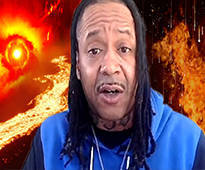
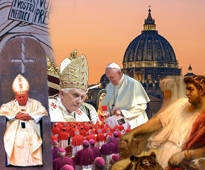
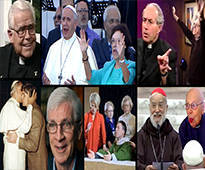
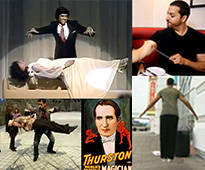
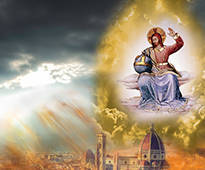

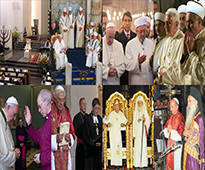


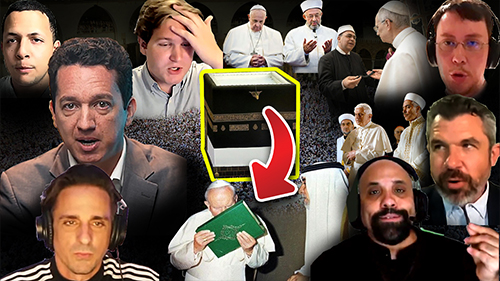 " />
" /> " />
" />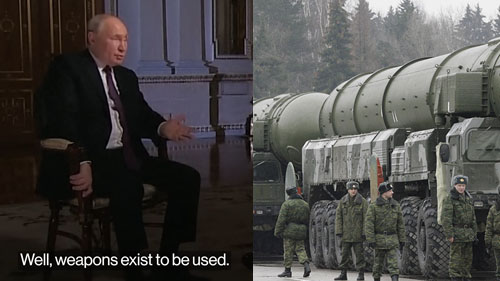 " />
" />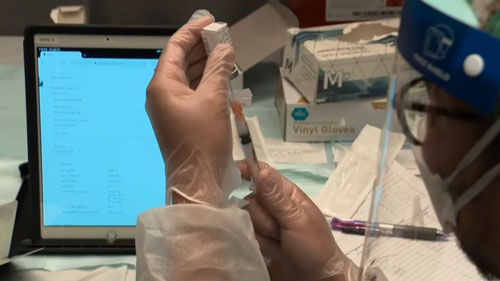 " />
" /> " />
" />




Protocol 122/49 (Suprema haec sacra)
About four months after the silencing of Fr. Feeney in April by Richard Cushing, the apostate Archbishop of Boston, the Holy Office issued a document on August 8, 1949. Actually, the document was a letter addressed to Bishop Cushing, and signed by Cardinal Marchetti-Selvaggiani, known to most as Protocol No. 122/49. It is also called Suprema haec sacra and the Marchetti-Selvaggiani letter. It is one of the most crucial documents in regard to the modern apostasy from the faith. Protocol 122/49 was not published in the Acts of the Apostolic See (Acta Apostolicae Sedis) but in The Pilot, the news organ for the Archdiocese of Boston. Keep in mind that this letter was published in Boston, as the significance of this will become more clear in the Section: “The Verdict is in: Boston leads the Way in a Massive Priestly Scandal that Rocks the Nation.”
The absence of Protocol 122/49 from the Acts of the Apostolic See proves that it has no binding character; that is to say, Protocol 122/49 is not an infallible or binding teaching of the Catholic Church. Protocol 122/49 was not signed by Pope Pius XII either, and has the authority of a correspondence of two Cardinals (Marchetti-Selvaggiani who wrote the letter, and Cardinal Ottaviani who also signed it) to one archbishop – which is none. The letter, in fact, and to put it simply, is fraught with heresy, deceit, ambiguity and betrayal. Immediately after the publication of Protocol 122/49, The Worcester Telegram ran a typical headline:
This was the impression given to almost the entire Catholic world by Protocol 122/49 – the Marchetti-Selvaggiani letter. Protocol 122/49, as the above headline bluntly said, held the “No Salvation Outside the Church Doctrine” to be false. By this fateful letter, the enemies of the dogma and the Church appeared to have been vindicated and the defenders of the dogma seemed to have been vanquished. The problem for the apparent victors, however, was that this document was nothing more than a letter from two heretical cardinals of the Holy Office, who had already embraced the heresy later adopted by Vatican II, to one apostate archbishop in Boston. Some may be surprised that I describe Cardinal Ottaviani as heretical, since he is considered by many to have been orthodox. If his signature on the Protocol isn’t enough proof for his heresy, consider that he signed all of the Vatican II documents and aligned himself with the post-Vatican II revolution.
It’s interesting that even Msgr. Joseph Clifford Fenton, the well known editor of The American Ecclesiastical Review before Vatican II, who was unfortunately a defender of Protocol 122/49, was forced to admit that it’s not infallible:
In other words, according to Fenton, the teaching of Suprema haec sacra is not infallible and must be found in earlier documents; but it isn’t, as we will see. Fenton is simply wrong when he says that Suprema haec sacra is nevertheless authoritative. Suprema haec sacra is neither authoritative nor infallible, but heretical and false.
Since almost the entire public was (and is) given the impression that Protocol 122/49 represented the official teaching of the Catholic Church, it constituted the selling out of Jesus Christ, His doctrine and His Church to the world, a selling out that had to take place before the wholesale apostasy of Vatican II. By Protocol 122/49 and the persecution of Fr. Feeney, the public was given the impression that the Catholic Church had now overturned a 20 centuries’ old dogma of the faith: that the Catholic Faith is definitely necessary for salvation. And even to this day, if one were to ask almost every so-called Catholic priest in the world about the dogma Outside the Catholic Church There is No Salvation, he would be answered with a reference to the Father Feeney controversy and Protocol 122/49, even if the priest is unable to identify or recall the specific names and dates. Try it, I know from experience. Basically all of the Novus Ordo priests who know anything about the issue will use Protocol 122/49 and the “condemnation” of Fr. Feeney to justify their heretical, anti-Catholic, antichrist, anti-magisterial belief that men can be saved in non-Catholic religions and without the Catholic Faith. These are the fruits of the infamous Protocol 122/49. And by their fruits you shall know them (Mt. 7:16).
Now let’s take a look at a few excerpts from the Protocol:
Let’s stop it right there. Already it’s clear that the author of the Protocol is preparing the reader’s mind to accept something different than simply “that infallible statement by which we are taught that there is no salvation outside the Church.” The author is clearly easing into an explanation of the phrase “Outside the Church There is No Salvation” other than what the words themselves state and declare. If the author were not preparing the reader to accept an understanding other than what the words of the dogma themselves state and declare, then he would have simply written: “This dogma must be understood as the Church has defined it, exactly as the words state and declare.”
Compare the Protocol’s attempt to explain the dogma away with Pope Gregory XVI’s treatment of the same issue in his encyclical Summo Iugiter Studio.
Pope Gregory XVI does not say, “However, this dogma must be understood in that sense in which the Church herself understands it,” as does the heretical Protocol 122/49. No, he unequivocally affirms that THIS IS INDEED THE TEACHING OF THE CATHOLIC CHURCH. Throughout the whole encyclical, Gregory XVI does not fail to repeatedly affirm the true and literal meaning of the phrase Outside the Church There is No Salvation, without qualification or exception, as it had been defined. Father Feeney and his allies in defense of the dogma were reiterating exactly what Gregory XVI officially taught above. It doesn’t take a rocket scientist to figure out that if Protocol 122/49 was written to “correct” the understanding of Father Feeney on Outside the Church There is No Salvation (which it was), then Protocol 122/49 was also “correcting” the understanding of Pope Gregory XVI and all of the infallible statements on the topic for 20 centuries.
Also, notice that Pope Gregory XVI makes reference to the dogmatic definition of the Fourth Lateran Council to substantiate his position and literal understanding of the formula Outside the Church There is No Salvation. Throughout the whole document, Protocol 122/49 makes no reference to any of the dogmatic definitions on this topic. This is because Pope Gregory XVI, being a Catholic, knew that the only understanding of a dogma that exists is that which Holy Mother Church has once declared; while the authors of the Protocol, being heretics, did not believe that a dogma is to be understood exactly as it was once declared. That explains why Pope Gregory cited exactly what Holy Mother Church has once declared and the authors of the Protocol did not.
If the understanding of the dogma Outside the Church There is No Salvation was not clear from the teaching of the Chair of Peter (the infallible definitions on the topic), then a 1949 letter of Cardinal Marchetti-Selvaggiani is certainly not going to give it to us! And if no exceptions or qualifications to this dogma were understood at the time of the definitions – nor at the time of Pope Gregory XVI – then it is impossible for exceptions to come into our understanding of the dogma after that point (e.g., in 1949), because the dogma had already been defined and taught long before. Discovery of a new understanding of the dogma in 1949 is a denial of the understanding of the dogma as it had been defined. But define new dogma is indeed what the Protocol tried to do. I continue with the Protocol.
Here the Protocol begins to enter into its new explanation of the dogma Outside the Catholic Church There is No Salvation, but in a diabolically clever manner. The ambiguity lies in the fact that this statement is true: no one who, knowing the Church to have been divinely established, nevertheless refuses to submit to Her and the Roman Pontiff will be saved. But everyone reading this document is also given the clear impression by this language that some people, who have unknowingly failed to submit to the Church and the Roman Pontiff, can be saved. This is heretical and would actually make it counterproductive to convince people that the Catholic Church is divinely established!
Compare the dogmatic definition of the Catholic Church with the addition to the dogma by Protocol 122/49.
The Dogma:
The Addition by Protocol 122/49:
The reader can easily see that the intended meaning of Protocol 122/49 is a departure from the understanding of the dogma which Holy Mother Church has once declared. No one can deny this. The dogma of the necessity of submission to the Roman Pontiff for salvation has gone from application to every human creature (Boniface VIII) to “those knowing the Church to have been divinely established” (Protocol 122/49), again making it foolish to convince people that the Church is divinely established. I continue with the Protocol:
Here one detects another denial of the dogma as it was defined, and a departure from the understanding of the dogma that Holy Mother Church has once declared. Compare the following dogmatic definition of Pope Eugene IV with these paragraphs from Protocol 122/49, especially the underlined portions.
The Dogma:
We see that Protocol 122/49 (quoted above) is denying the necessity of incorporation into the ecclesiastici corporis, which is heresy!
It was necessary to be in the Church’s “bosom and unity” (Eugene IV), but now it is “not always required to be incorporated into the Church actually as a member” (Protocol 122/49). The defined dogma of INCORPORATION and actually abiding in the ecclesiastical body (ecclesiastici corporis) has been denied. This is heresy!
There is no way on earth that the teaching of Protocol 122/49 is compatible with the teaching of Pope Eugene IV and Pope Boniface VIII. To accept, believe or promote the Protocol is to act contrary to these definitions.
I continue with the Protocol:
Here the heresy comes out quite bluntly. People who don’t hold the Catholic Faith – who are “involved in invincible ignorance” – can also be united by “implicit” desire, as long as “a person wishes his will to be conformed to the will of God.” And I remind the reader that Protocol 122/49 was written in specific contradistinction to Fr. Feeney’s statement that all who die as non-Catholics are lost. That is to say, the Protocol was written to specifically distinguish its own teaching from Fr. Feeney’s affirmation that all who die as non-Catholics are lost, which shows that the Protocol was teaching that people who die as non-Catholics and in false religions can be saved. Thus, the Protocol’s statement above is quite obviously, and nothing other than, the heresy that one can be saved in any religion or in no religion, as long as morality is maintained.
Compare the above passage from the Protocol with the following dogmatic definitions.
The Dogma:
I continue with the Protocol:
In the process of giving its false analysis of Pope Pius XII’s encyclical Mystici Corporis, Suprema haec sacra teaches that people who “do not belong” to the Body of the Church can be saved. What’s interesting about this heretical passage in Protocol 122/49 is that even Msgr. Fenton (one of its greatest defenders) admits that one cannot say that the Soul of the Church is more extensive than the Body.
Hence, to say that it is not necessary to belong to the Body, as Suprema haec sacra (the Protocol) does, is to say that it is not necessary to belong to the Church. Therefore, by its statement above, Protocol 122/49 taught the heresy that it is not necessary to belong to the Catholic Church to be saved, the very thing denounced by Pius XII.
This is extremely significant, for it proves that the teaching of Suprema haec sacra – and therefore the teaching of Msgr. Joseph Clifford Fenton who defended it – is heretical. They both deny the necessity of “belonging” to the true Church in order to gain eternal salvation.
The reality was that Father Feeney’s expulsion from the Jesuit Order had no validity. The men who expelled him and the clerics who were against him were automatically expelled from the Catholic Church for adhering to the heresy that those who die as non-Catholics can be saved. This is similar to the situation in the 5th century, when the Patriarch of Constantinople, Nestorius, began to preach the heresy that Mary was not the Mother of God. The faithful reacted, accused Nestorius of heresy and denounced him as a heretic who was outside the Catholic Church. And Nestorius was later condemned at the Council of Ephesus in 431. Here is what Pope St. Celestine I stated about those who had been excommunicated by Nestorius after he began to preach heresy.
Pope St. Celestine authoritatively confirms the principle that a public heretic is a person with no authority to depose, excommunicate or expel. The quote is found in De Romano Pontifice, the work of St. Robert Bellarmine. This explains why all of the persecution against Father Feeney (expulsion, interdiction, etc.) had no validity, because he was right and those who were against him were wrong. He defended the dogma that there is no salvation outside the Church, while his opponents defended the heresy that there is salvation outside the Church.
Things between Father Feeney and the heretics in Boston remained unchanged until September 14, 1952. At this point, Richard Cushing, the “Archbishop” of Boston, demanded that Father Feeney retract his “interpretation” of the dogma – which means retract the dogma – and make an explicit profession of submission to the Marchetti-Selvaggiani letter (Protocol 122/49). With four witnesses, Father Feeney presented himself before Cushing. He told him that his only option was to declare the letter of Marchetti-Selvaggiani “absolutely scandalous because it was frankly heretical.” This is exactly what Pope Gregory XVI would have said about the horrible Protocol letter, as well as any Catholic.
During their meeting, Fr. Feeney asked “Archbishop” Cushing if he was in agreement with the Aug. 8, 1949 letter of Marchetti-Selvaggiani. Cushing responded, “I am not a theologian. All that I know is what I am told.” This evasive and non-committal answer shows the true colors of Cushing, this heretic, false pastor and enemy of Jesus Christ. If Cushing believed that one was bound to the letter, then he should have responded without hesitation that he agreed with it. But because he didn’t want to defend the letter in any of its details, especially its denials of dogma, he responded by evading the question. This evasion prohibited Fr. Feeney from putting him on the spot and convicting him with the dogma that was being denied. Father Feeney accused Cushing of failing in his duty and left.
Endnotes:
[1] Bro. Robert Mary, Father Feeney and The Truth About Salvation, p. 21.
[2] Msgr. Joseph Clifford Fenton, The Catholic Church and Salvation, p. 103
[3] The Official English Translation of Protocol 122/49, quoted by Fr. Jean-Marc Rulleau, Baptism of Desire, p. 69.
[4] The Papal Encyclicals, Vol. 1 (1740-1878), pp. 229-230.
[5] Denzinger 1800.
[6] The Official English Translation of Protocol 122/49, quoted by Fr. Jean-Marc Rulleau, Baptism of Desire, p. 70.
[7] Denzinger 468-469.
[8] The Official English Translation of Protocol 122/49, quoted by Fr. Jean-Marc Rulleau, Baptism of Desire, p. 70.
[9] The Official English Translation of Protocol 122/49, quoted by Fr. Jean-Marc Rulleau, Baptism of Desire, p. 70.
[10] Denzinger 714; Decrees of the Ecumenical Councils, Vol. 1, p. 578.
[11] The Official English Translation of Protocol 122/49, quoted by Fr. Jean-Marc Rulleau, Baptism of Desire, p. 71.
[12] Fr. Michael Muller, C.SS.R., The Catholic Dogma, pp. 217-218.
[13] Decrees of the Ecumenical Councils, Vol. 1, p. 551.
[14] Denzinger 1000.
[15] Denzinger 1473.
[16] Decrees of the Ecumenical Councils, Vol. 2, p. 803.
[17] Quoted and translated by Msgr. Fenton, The Catholic Church and Salvation, p. 102.
[18] The Papal Encyclicals, Vol. 4 (1939-1958), p. 179; Denzinger 2319.
[19] Decrees of the Ecumenical Councils, Vol. 1, p. 646.
[20] Quoted by St. Robert Bellarmine, De Romano Pontifice, II, 30.
Sign up for our free e-mail list to see future vaticancatholic.com videos and articles.
Recent Content
^